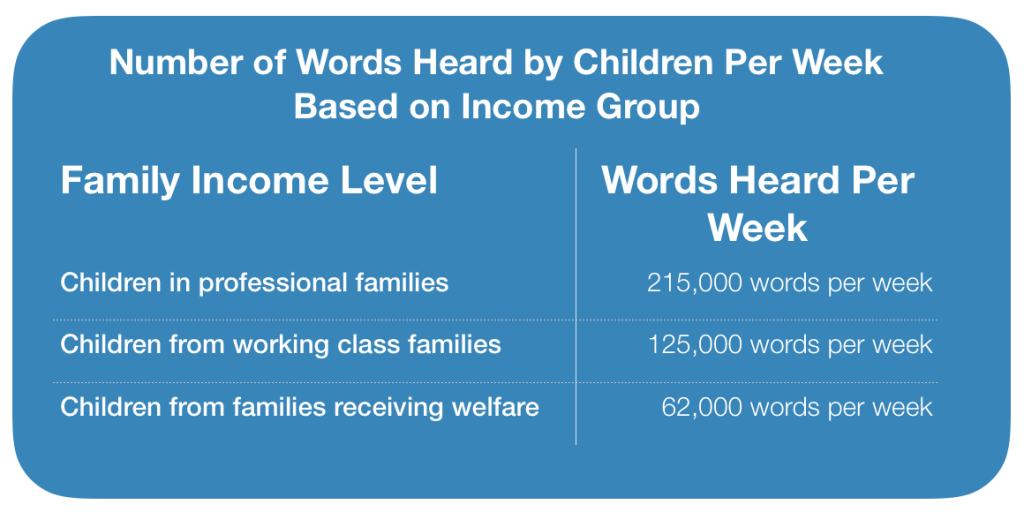 I was curious about something regarding public schools. I wondered what it would look like if I compared an average of the top-50 school districts in the United States to 50 of the worst school districts in the United States. I went to Niche.com, and I pulled statistics from the top-50 public school districts and entered those education metrics into a spreadsheet. I then did the same thing for 50 school districts near the bottom. These would be 50 failing schools. However, the bottom school districts I selected were not the very bottom, but slightly up from the bottom. The reason was the very bottom schools had a lot of missing metrics and that led to meaningless results. And frankly, once you look it schools below a certain threshold, it becomes silly to compare which is worse. At some point the metrics are just so awful that ranking them just isn’t going to matter. I gathered metrics from 50 failing school districts relatively close to the bottom, and I avoided cherry-picking which ones, so the results would be meaningful. After the stats were entered into the spreadsheet I averaged the metrics and looked at them side-by-side to see if anything stood out. Here are the results:
I was curious about something regarding public schools. I wondered what it would look like if I compared an average of the top-50 school districts in the United States to 50 of the worst school districts in the United States. I went to Niche.com, and I pulled statistics from the top-50 public school districts and entered those education metrics into a spreadsheet. I then did the same thing for 50 school districts near the bottom. These would be 50 failing schools. However, the bottom school districts I selected were not the very bottom, but slightly up from the bottom. The reason was the very bottom schools had a lot of missing metrics and that led to meaningless results. And frankly, once you look it schools below a certain threshold, it becomes silly to compare which is worse. At some point the metrics are just so awful that ranking them just isn’t going to matter. I gathered metrics from 50 failing school districts relatively close to the bottom, and I avoided cherry-picking which ones, so the results would be meaningful. After the stats were entered into the spreadsheet I averaged the metrics and looked at them side-by-side to see if anything stood out. Here are the results:
| Average of top 50 school districts |
Average of 50 “near-bottom” school districts |
|
| ACADEMICS | ||
| Percent Proficient Reading | 84.40% | 31.80% |
| Percent Proficient Math | 80.50% | 21.60% |
| Average Graduation Rate | 96.40% | 5.60% |
| Average SAT | 1314 | 25 |
| Average ACT | 29 | 1 |
| DIVERSITY | ||
| Students | 7612 | 1923 |
| Free or Reduced Lunch | 11.20% | 67.40% |
| GENDER | ||
| Female | 48.90% | 48.70% |
| Male | 51.10% | 51.30% |
| RACE | ||
| White | 66.40% | 45.40% |
| African-American | 5.70% | 11.60% |
| Hispanic | 7.40% | 33.80% |
| Asian | 16.40% | 2.50% |
| Multiracial | 4.00% | 3.60% |
| Native American | 0.20% | 2.80% |
| Pacific Islander | 0.10% | 0.30% |
| Student/Teacher Ratio | 14 | 16 |
| Average Teacher Salary | $80,652.00 | $51,882.00 |
| Expenses Per Student | $19,446.00 | $11,601.00 |
| Education Expenses: Instruction | 62.00% | 57.00% |
| Education Expenses: Support Services | 36.00% | 37.00% |
| Education Expenses: Other | 2.00% | 4.00% |
If you look at the table above there are some interesting insights that stand out.
Insight #1: Teacher Salary
The average salary for teachers in the top 50 school districts was $80,652, while the average salary at the bottom 50 was $51,882 — a 55% difference. It’s extremely interesting to think about why that is the case, so we will look at that later.

Insight #2: Class Sizes
Notice that class sizes for the top 50 and bottom 50 are not that different. The class sizes for the top 50 had a student/teacher ratio of 14:1, while the bottom 50 had a student/teacher ratio of 16:1. It’s interesting that good schools and bad schools have student/teacher ratios that are so close to each other. I think it’s one of the more important insights to be looked at. We will delve into it deeper later in this article.
Insight #3: Poverty
It is not surprising to see that such a large number of failing districts had issues with poverty, as indicated by the free or reduced lunch metric. Poverty, above all, is the root cause of problems in public schools. By that I mean, if you solve the education-issues that accompany poverty, you solve school problems. Doing that would have a positive impact on everything from dropout rates to crime-prevention, and would be a tremendous investment in our economy and overall happiness as a nation.
Let’s begin looking at these three interesting insights — teacher salary, class sizes, and poverty — and discuss what they really mean to education.
Why do teachers at the top school districts earn a higher salary than teachers in failing school districts?
Interviewing a teacher who has experience with the situation reveals part of the reason: They stay longer a the top school districts, which means their average salary is based on more teachers at the upper end of the pay scale. Bad districts have high teacher turnover rates. Often, they are new teachers just trying to get their first teaching job so they can move on to a better school district. When they leave, another new teacher will take over the vacancy and start at the bottom of the pay scale again. This keeps the salary expenses very low, but it is extremely indicative of an ongoing problem. Teachers don’t want to stay because the school is failing, the district isn’t supportive of its teachers, and the teachers don’t feel as if they can make a difference because of poor leadership, unmotivated students, a lack of resources, lower pay, and ongoing issues within the district.
You cannot really talk about public schools without talking about teacher unions. Let’s consider how teacher unions affect pay and performance. But let’s not just discuss it. Let’s look at teacher union statisics.
Are teacher unions good or bad?
Teachers unions are an obvious reason for higher teacher pay. Lately, teacher unions have been a common target for what’s wrong with schools. Arguments against teacher unions are that they protect mediocre teachers’ jobs and maintain the status quo. Do they?
The following table ranks academic performance in all states and the District of Columbia from best to worst, and the far right column is an indicator of teacher union strength in that state. The data source is from the Thomas Fordham Institute.
| RANK (BEST TO WORST) |
STATE | TEACHER UNION STRENGTH |
| 1 | MA | Medium |
| 2 | NJ | Very Strong |
| 3 | VT | Somewhat Strong |
| 4 | MD | Medium |
| 5 | CT | Somewhat Strong |
| 6 | NH | Medium |
| 7 | PA | Very Strong |
| 8 | WY | Medium |
| 9 | NY | Very Strong |
| 10 | MN | Somewhat Strong |
| 11 | WI | Somewhat Strong |
| 12 | VA | Very Weak or Nonexistent |
| 13 | RI | Very Strong |
| 14 | ME | Medium |
| 15 | ND | Medium |
| 16 | DE | Somewhat Strong |
| 17 | IL | Very Strong |
| 18 | NE | Medium |
| 19 | IA | Medium |
| 20 | AK | Somewhat Strong |
| 21 | IN | Medium |
| 22 | WA | Very Strong |
| 23 | OH | Somewhat Strong |
| 24 | CO | Somewhat Weak |
| 25 | HI | Somewhat Strong |
| 26 | KS | Somewhat Weak |
| 27 | KY | Medium |
| 28 | DC | Medium |
| 29 | MT | Very Strong |
| 30 | FL | Very Weak or Nonexistent |
| 31 | MO | Somewhat Weak |
| 32 | UT | Somewhat Weak |
| 33 | GA | Very Weak or Nonexistent |
| 34 | WV | Somewhat Strong |
| 35 | MI | Somewhat Strong |
| 36 | TN | Somewhat Weak |
| 37 | NC | Somewhat Weak |
| 38 | SD | Somewhat Weak |
| 39 | OR | Very Strong |
| 40 | AR | Very Weak or Nonexistent |
| 41 | CA | Very Strong |
| 42 | TX | Very Weak or Nonexistent |
| 43 | SC | Very Weak or Nonexistent |
| 44 | LA | Very Weak or Nonexistent |
| 45 | AZ | Very Weak or Nonexistent |
| 46 | OK | Very Weak or Nonexistent |
| 47 | AL | Somewhat Strong |
| 48 | ID | Somewhat Weak |
| 49 | NM | Somewhat Weak |
| 50 | MS | Very Weak or Nonexistent |
| 51 | NV | Medium |
Look at the above table. Why are the states with the weakest teacher unions and the lowest pay also the ones that rank at the bottom in academic performance? Teacher unions are often blamed for schools’ problems, yet the states with the strongest teachers unions have the best academic performance.
Why?
It’s not an easy question to answer. You can see some indication where strong teacher unions have bad schools, such as California. You can also see some examples where weak or non-existent teacher unions have good schools, like Virginia. But analyzing the data in whole clearly shows that stronger teacher union districts have better school systems, and if society is ever going to get past making educational decisions based on myths, this fact needs to be understood.
Part of the reason that the better schools are the ones with strong teacher unions is that teachers are willing to stay at a job if they are treated well. Teacher unions look after the job conditions for the teachers, which is why they are often blamed for protecting the jobs of bad teachers. But if that was the biggest thing that teacher unions did then you would see the schools with teacher unions performing worse than non-union schools because they would be full of bad teachers.
Before continuing, let’s talk about something everyone should be able to agree on. Any enterprise, whether it be a school, a business, or some other organization, will only be successful if issues are brought up and corrected. In good organizations, employees or people lower in the organization notice issues, give feedback to managers or people at the top, and those issues get corrected. That’s the ideal case, and it leads to a successful organization. If an organization ignores systematic issues that people lower in the organization point out, then the problems are never corrected, and the organization suffers.
I think everyone can agree on that simple idea. So how does this apply to teacher unions?
When used correctly, teacher unions become an essential component to a school’s success because they raise essential education-related issues up to administrators so they can be resolved. Teachers notice problems because they see issues first-hand. But there are many reasons a teacher might not be inclined to tell an administrator about the issue in a non-union environment. The teacher may not feel like the administrator will do anything about it, or they may feel like they are putting their job in jeopardy if they complain. If an administrator sets the example of not acting on teachers’ concerns, the price is that teachers will stop communicating their concerns. They will let the problems go unresolved. But if a school has a strong teacher union, the teacher can bring the issue up to the union, and the union will take appropriate action with the administrators.
This helps to explain why some schools with strong teacher unions still do poorly, such as in California. In California, the problems are bigger than a union’s or administration’s ability to solve. These are issues like poverty and overly large class sizes for students with significant learning gaps that are not being addressed.
So it takes much more than a strong teacher union to have a successful school. And it’s also the case the non-union schools can enjoy great performance, too. But it takes something else. That “something else” is leadership who will listen to the teachers and an environment where the administrators can correct the issues that teachers point out. If any of that fails, the organization ultimately fails, too.
Inequality in public school funding
Data clearly shows that the best schools are well-funded schools. Underfunded schools like in Nevada simply cannot provide the resources to help children succeed. But funding is an issue everywhere in the United States. Even affluent school districts such as Fairfax County Virginia have had issues with funding, as you can see in this video:
School systems get money primarily from local funding sources. In good school districts, the population supports the schools financially. They do this with property taxes, state and local income taxes, and school levies. The heavy dependence on property taxes is a very large reason that public schools are underfunded. Once a school system begins to have problems, people with children decide not to live there. Property values decline, which drives down property tax revenue even further. This negative feedback loop results in a downward spiral until the school system stabilizes into some low level of funding, and the school plateaus without the resources to recover.
Are teachers overpaid?
Here is an interesting perspective on the cost of school. Consider how much it would cost to hire a childcare service to watch your children for 8 hours per day, 180 days per year. Just consider a childcare worker who comes to your home and watches them. Would $10 per hour be a reasonable rate to trust your children to?
Now consider you actually want the caretaker who watches them to spend an extra couple of hours each day at home developing a daily set of lessons to teach your children for Math, Science, History, English, Geography and so on. Would you expect to pay more?
Now assume that you want the childcare worker to have credentials, such as a degree in education, perhaps a masters degree, and several hours per year spent on professional development.
Next, you decide you want some extracurricular activities thrown in for your child, such as football, chess club, or band. You insist that the childcare service provide that for your child. What would you expect to pay now? Certainly not $10 per hour anymore.
Then, you want the caretaker to provide books and supplies, and a computer for your child. And you want access to a library and other resources.
A quick Google search for the average cost per student in the United States showed that it costs $10,700 on average to send a child to school for 8 hours per day, 180 days per year. If you divide that by 180 days per year you get $59.44 per day. If you divide that number by 8 hours per day you get $7.43 per hour. And that doesn’t include the extracurricular activities or free time put in by teachers at home. That’s half the average price of a babysitter in the United States.
The point is that we are expecting a great deal from a school system. We want all of that for very little. No, teachers are not overpaid. They are drastically underpaid for what society expects from them.
Does class size affect learning outcomes?
The table at the top of this article shows that class sizes between good school districts and bad school districts are not necessarily all that different. Also, compared to other countries, schools in the United States have reasonable class sizes. According to an OECD report, the United States has average class sizes, almost exactly at the average of other OECD countries. However, assuming that class sizes are not the issue for failing schools would be a huge misjudgment.
Why?
There is a big difference in trying to teach twenty kids in the best schools versus 20 kids in the worst schools. Consider the issues that students in the worst schools have, especially if many of its students live in poverty.
Throughout childhood, a child growing up in poverty will be exposed to far fewer words than a child growing up in working-class or middle-class families. As they grow up their friends are also likely in the same situation, which means the words they are exposed to are often not used correctly.

This lack of exposure to words is perhaps one of the biggest impediments to learning that children growing up in poverty have. They begin life with an incredible obstacle to overcome, that children growing up in more affluent homes do not have. The system is not designed to help them catch up. They get thrown into a school system that isn’t allowed to acknowledge and address these impediments properly, so they fall behind in school and ultimately give up.
This helps to explain why the dropout rate for some of the poorest schools is as high as 95%, and it also shows why many people who do graduate do not have enough knowledge to be considered “educated.” They were passed along, grade-by-grade because schools are under pressure to do so. A teacher cannot reasonably fail every under-performing child. What would happen if one teacher did that? The children who failed would repeat the class with the same missing gaps that they started the class with. Failing the class wouldn’t address why they really failed in the first place, and the class sizes would grow to an intolerable number, filled with kids who continue to fail. It’s an impossible situation for a teacher.
Here is the sad reality. Affluent schools that could function fine with a higher student/teacher ratio actually get a lower student/teacher ratio. And schools that disparately need more teachers to address the learning gaps that accompany poverty actually have higher class sizes. It might be that a failing school really needs a student/teacher ratio of 10:1, but instead, they have 20 kids in the class, many of which desperately need extra attention and cannot get it.
This is one of the contributing factors to California’s poorer schools. According to this 2011 report, California had the highest class sizes in the nation. California also has an issue with poverty and many students speak English as a second language. So when a child who has these issues is thrown into a large class, it’s no wonder so many give up. There is simply no way they can get the attention they need to meet their needs when their classes are filled with other kids with learning gaps, as well.
Can the learning gaps that accompany poverty be closed?
Kids need to see the value of what they are learning. If they don’t have the support at home, they need to get that support from the school. But schools in poor neighborhoods do not have the resources to help that many children who need extra help.
Kids need to be stimulated to enjoy learning. But to do that requires a lot from a teacher. If a class consists of a group of kids who struggle near the bottom, providing the enriching and challenging material at their grade-level isn’t possible because they didn’t acquire the building blocks to understand the new material in the first place. This is one of the reasons standardized testing fails so badly. Teachers are under pressure to get as many as they can through the test, so they cannot slow down the curriculum to address the real needs of their students. Kids simply get left behind, which is ironic since the No Child Left Behind Act was supposed to solve that very issue.
Will performance pay or merit pay make a difference to education?
When you consider that the worst schools in the country are the ones with the least funding, and the low-funding is due to poverty, and poverty causes the problems that we illustrated above, it becomes obvious that creating a merit-based education system for failing schools is ludicrous. Performance-based-pay fails to address the real issues that cause low academic achievement. No amount of pay-for-performance law will change this fundamental fact in education.
Merit pay is a distraction from solving the real issues that kids at failing schools need to have addressed. Merit pay is based on whether or not a student passes a standardized test in certain areas at a certain time in their development. But if the child is so far behind, no amount of merit pay or punishment applied to a teacher will magically make that student successful. These are students who have missed out on millions of words over the course of their lives. They’ve fallen so far behind that they’ve completely given up on trying to keep up. Merit pay can’t fix that.
What are some ways we should consider to fix education?
We need to focus much less on standardized testing. This doesn’t mean we need to avoid it, nor should we. But standardized-test-scores shouldn’t be used for anything other than helping schools see trends and improve. Schools in different areas have different challenges. Standardized testing is often trying to compare apples to oranges. The standards or benchmarks for a child growing up in a well-to-do family and one growing up in poverty simply cannot be reached at the same ages.
Another issue with standardized testing and merit pay is that it assumes that certain parts of education are more important than others. It assumes Math is more important than Music. It assumes Reading is more important than Art. It assumes Science is more important than sports.
I’m probably going to upset some people with this next example, but please consider it.
Think about Lebron James. He’s the best basketball player, possibly ever on the planet. Do we care if he’s good at Math or not? Does it matter if his grammar is correct? He’s an icon because of basketball, and he became good at basketball for three reasons:
- He had a natural ability
- He had a passion for basketball
- He practiced a lot
If you take away any of those factors, Lebron James would not be the Lebron we know today. If he never practiced basketball, no amount of natural ability would have made him the best at it. If he didn’t love the game he wouldn’t have wanted to practice like he did, which would never have amplified his natural ability.
The point? We need to let more students choose their own path in education. When you focus on improving things you are naturally weak at, you may improve and become average at them. But focus on amplifying strength, you can become an expert.
Yes, math is important. Yes, grammar is important. But most people don’t use anything above basic math in everyday life. Most adults cannot remember 99% of what they learned in Science as a student. And most people are not all that good at writing. These are skills that are important to learn, but when we make them the ultimate focus in school we end up avoiding the greater good, which is discovering the natural talents and passions of children at an early age so those talents and passions can be amplified.
I’m going to conclude with this video because I think it really nails the point about our schools. I especially love the end of the video and the Death Valley analogy.
Before you watch the video, I’d like to ask you a favor. Go on Facebook. Go on Twitter. Please share this article so others can begin thinking about the problems and real solutions that plague our country’s schools.





